Today’s article is brought to you by co-founders of Super Awesome Games and co-designers of Vs. System® 2PCG®, Danny Mandel and Ben Cichoski.
Hi everyone,
Yesterday we announced that with the introduction of the Marvel Cinematic Universe (MCU), Vs. System® 2PCG® would now be split into two Universes. Today we’re going to look deeper into what this means and talk about why we made this design decision.
First off here are the rules:
The Illustrated Universe includes cards with drawn or painted artwork. (All cards prior to the upcoming Arc belong to this universe.)
The Photographic Universe includes cards with images from movies or TV shows. (All MCU cards belong to this universe.)
When you build a deck you can’t mix together cards (including your main character) from the Illustrated Universe with cards from the Photographic Universe. However, you can still play decks from one universe against the other.
The two universes only affect deck building. Once the game starts it doesn’t affect anything. For example, if you have an Illustrated deck, it’s perfectly fine to play an effect that moves your opponent’s Photographic character to your side.
Now let’s take a look at some questions you might have.
Does this mean Upper Deck is phasing out the Illustrated Universe and from now on all cards will be for the Photographic Universe?
No. Both universes will be supported going forward. The very next Arc (starting in August) features new Illustrated cards. And after that there will be new expansions for both Universes.
Is this some kind of rotation for the game that makes all my old cards obsolete?
Not at all. There are currently no plans to retire or “rotate out” older cards. All Illustrated cards are still perfectly legal in tournaments. The Split Universe is just a deckbuilding rule.
It’s not a perfect analogy but you can kind of compare building a Photographic Universe deck to building a Loyalty deck. To build a Loyalty deck you pick one team and then all cards you include must be from that team (plus any neutral cards). When you build a Photographic deck all cards you include must be from that Universe.
Of course, it’s a little different since a Photographic deck can include cards from any Photographic teams (There are currently two teams in the Earth 199999 Arc, but there will be new teams down the road.)
Why did you decide to Split the Universes?
I’m glad you asked! I can’t promise you’ll like or agree with our reasoning, but I can assure you that we didn’t make this decision lightly, and that we believe this is the best way to keep the game fresh for existing players and to introduce the game to new players.
There are several factors that led us to the Split Universes, some that predated adding the MCU to the game and some that came with the MCU. I’ll start by going over the issues, then I’ll explain how the Split Universes addresses them.
Issue 1: It’s always important to get new players into the game.
We all love the game and want it to last forever. But for that to happen, we need lots of players to play and to buy the sets. Adding new players to the game not only increases the player base, making it easier for you to find opponents or teammates, but it offsets the player loss when some players leave the game.
One of the biggest barriers to entry for a new player is the amount of cards that already exist in the game when they decide to start. Not only is there a financial cost in picking up all the expansions that already exist, but it can be intimating to have to learn about all the cards that are out there in order to build a deck.
This is one of the reasons that some expandable games start “rotating out” older sets. They essentially say that older sets are no longer featured in the majority of Organized Play (i.e. tournaments). This makes it easier for new players to get into the game since they can ignore some of the older sets. However, rotation is a double-edged sword since it can frustrate longtime players who want to keep using their older cards in tournaments.
Issue 2: Older cards can overshadow or create constraints on new cards.
Each time a new expansion comes out its cards are compared to the best cards of the older expansions. As the card pool grows, it gets harder and harder for new cards to have an impact on the metagame. While we try to address this in various ways it’s a constant pressure on making new cards.
Similarly there are existing cards that put development constraints on the game. These are cards that are not problematic on their own, but could become so in combination with future cards.
The above factors of Issue #2 are another reason that some expandable games rotate out older sets. By removing sets from the main “format” (or way to play the game), it lets the new cards have the spotlight and removes some development constraints.
Issue 3: Many players don’t want to mix live action art with illustrated art.
Art style can be a polarizing topic. Some players prefer illustrated images and some prefer live action stills.
And some players are okay with either art style; they just don’t want to mix them. For example, when the MCU Arc was first announced, there was some outcry about players not wanting to mix the new live action images with their older, illustrated cards. They talked about skipping the Arc entirely.
Of course, some players don’t care about art at all. So the challenge for us was to make as many players happy as possible with the understanding that not everyone would like whichever direction we choose.
Once we knew the MCU would be added to the game, we felt there were two main options.
Option A. Ignore the art difference: Have the MCU (and future sets with live action images) get mixed in with all older cards. In other words, business as usual.
Option B. Split the Universes: Make the deckbuilding rule that you read about above.
Let’s look at the pros and cons of each option.
If we went with Option A, then players who don’t care about mixing the art styles would be happy. They could mix the new cards with all the older cards. On the other hand, the players who really dislike mixing the art styles would be unhappy.
In our discussions, we considered the idea that if a player doesn’t want to mix art styles in their deck they can just choose not to. The problem is, those players still want to make good decks. Which means they either need to mix art styles after all (which they don’t want to do) or they need to play a weaker deck than other players who don’t care about art.
If we went with Option B, we would solve the issue for players who don’t want to mix art styles. They don’t have to choose between mixing or playing a weaker deck because the rules prevent everyone from mixing.
We also realized that Option B would offer us a way to address Issues #1 and #2 above:
First let’s talk about new players. The Marvel movies are amazingly popular so the Earth 199999 Arc is an ideal opportunity to introduce new players to the game. And once a new player picks up the MCU Arc they will have a complete playset of the Photographic Universe. This lessens the financial barrier to entry that new players face.
Similarly, while building a deck they only need to consider the Photographic cards, which lowers the intimidation factor. Of course, when they take their Photographic deck to a tournament they will play against some players who have Illustrated decks. So in order to improve at the game they will still need to eventually learn the older cards, if only to play against them. However, this learning curve is still easier than trying to build a deck out of all available cards.
Now let’s talk about existing players. By creating a hard wall between the Illustrated and Photographic card pools, we’re able to alleviate some of the development pressure discussed in Issue #2 above. Cards in the Earth 199999 Arc are not competing for deck slots with older cards. And we can make cards for the Photographic Universe that would be overpowered in the larger Illustrated Universe’s card pool. It was exciting for us to have this new space to play in.
We’ve been at this a while now and we understand why many expandable games move to a rotation model. (We’ve even worked on games that did so.) But our first choice would be for the Vs. System® 2PCG®’s Main Format to include all cards. And we believe that the Split Universe deck-building rule will help us toward that goal.
And beyond these issues, we looked at the MCU as an opportunity to do something new, fresh, and special. We believe in taking risks with our designs. We did that with the updated engine, and we try to do it every set. So we followed that principle here too. Our goal is that players can’t wait to see what comes next.
You keep saying things like “Main Format.” Does that mean there will be Photographic-only formats?
Yes! Many players like new ways to play with their cards. For example, there have been Loyalty-only events. And we just heard about a tournament where the only main characters allowed have to be bald. (This is near and dear to our hearts. Well, Danny’s head.)
There will be a Photographic-only side event at Gen Con. And in the future, once more Photographic sets have been released, there could be Illustrated-only events.
If I pick up the MCU sets is that really enough cards to build a good deck?
Yes. When the game first came out there were four teams spread across 320 cards (not counting locations). The Earth 199999 Arc has two teams spread across 270 cards (not counting locations). And because there are only two teams, each of them has many more cards to work with than the older teams did at first.
Okay, but won’t all MCU decks look the same?
Once we decided to split the Universes, we wanted to make sure there would be plenty of deckbuilding options in the Photographic Universe right from the beginning. To this end, we put in 20 main characters (10 for each team) so there are tons of ideas to explore.
But the Illustrated Universe’s card pool is so much larger. How can the Photographic Universe compete?
Teams having different quantities of cards have been a factor since the early days of the Vs. System® 2PCG®. It’s just the nature of the content: While there will likely be new Avengers or X-Men content every year, some of the less well known teams or Intellectual Properties will simply get fewer cards. We try to take this into account by getting “pushier” with the power level of teams that we figure are less likely to get more cards in the future.
We’re taking the same approach with the Photographic Universe. While there will be new Photographic sets every year, the Illustrated sets will still outpace them. So to compensate, some Photographic cards get a power boost or get to dip into design space we haven’t done and wouldn’t do in the Illustrated Universe. (An example of this is Heimdall who lets you search for any character you can afford and put it right onto your side.)
I don’t know. This all sounds kind of wacky to me.
That’s fair. If there’s one thing we’ve learned, it’s that it’s far better to try new things than it is to avoid risks. So we’re trying something new. Hopefully when the dust settles, it will settle on two happy, healthy, Universes and one happy player base.
Thank you for reading,
Danny and Ben
Super Awesome Games







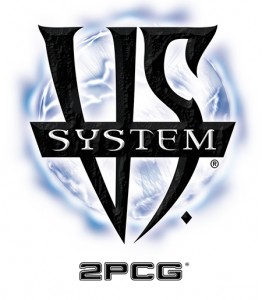
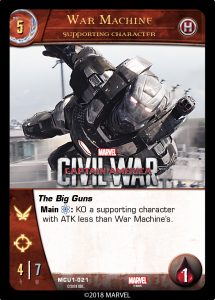
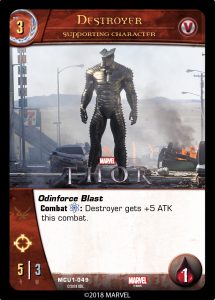
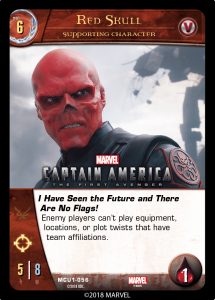
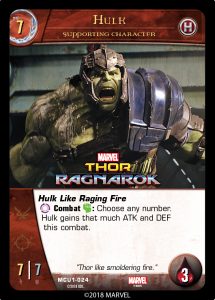

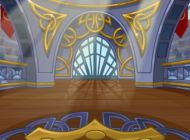
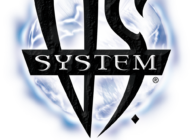
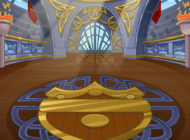

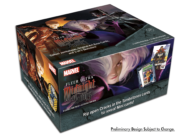
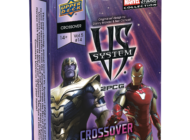
1 Comment
I appreciate the thoughtfulness of this article. So many people whined when you revised and revamped the game. Now they complain about screenshots or logos or deck building rules. It’s apparent that you have worked hard to make this a game a lot of people can enjoy – but those who hate change are always the loudest on the internet.